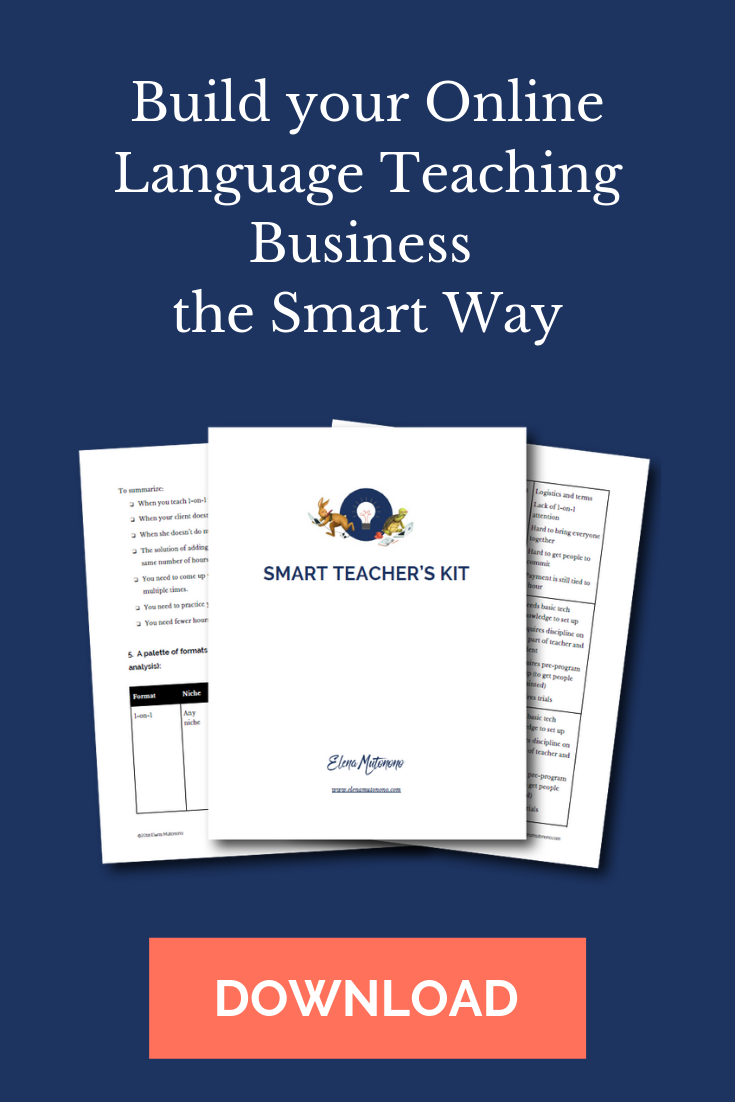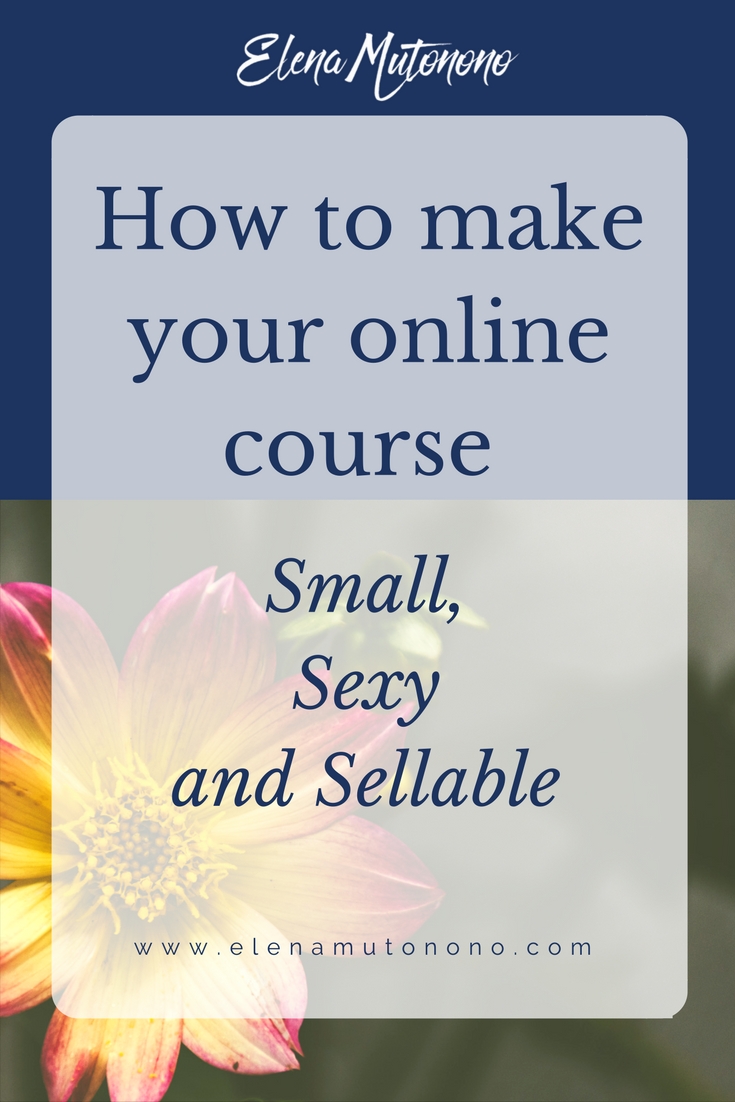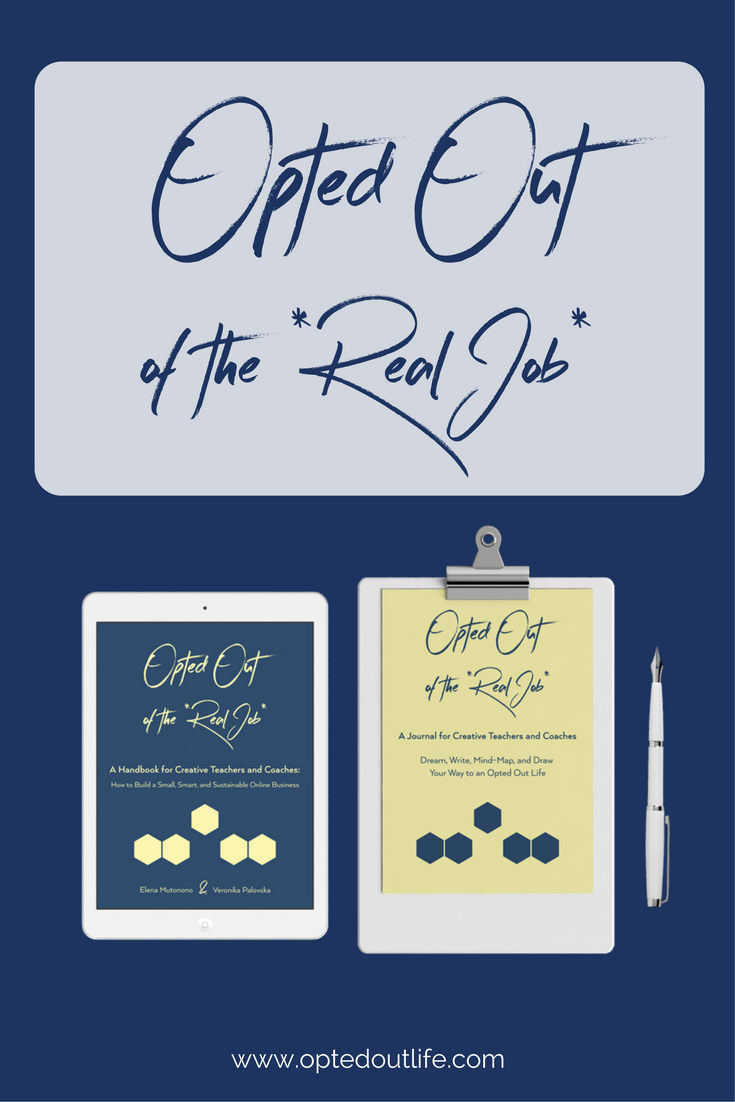Last week I had a free 15-min accent training session with somebody who had followed me on Instagram and signed up for my newsletter to get one of my free products. The day after the session the person purchased my two courses.
For as long as I’ve been teaching online I’ve heard pros and cons about giving some products/services away for free. Generally I get the sentiment and wouldn’t want to waste my time on people that just hop from one freebie to the next.
At the same time, once I posted my prices on the website (and those aren’t cheap) and added a few more affordable options like courses, e-books and textbooks, I realized that a free product/service is an opportunity to make a sale.
When we look at it from this perspective then we don’t worry about giving away our time. We’ll look at this as a way of beginning your conversation with a potential client. If nothing else, it will enlighten you about what’s still lacking in your product(s) or services and what you could do to bridge that gap.
Offering something for free is a wonderful incentive to encourage people to get on your mailing list, meet with you online (when applicable) or participate in your event and share it on social media. After all, it’s so much better when good words about your work comes from somebody else, not from you.
Want to get new clients online? Offer them something for free.Click To Tweet
It is important however to identify what kind of a free product or service you are willing to offer. Free products give your potential customers a feel for the quality of your work. They also help them get to know you better.
It’s easy to think that it’s enough for a potential client to read your bio on a social network to know immediately what you do and (most importantly) how you can solve this person’s problem. So giving them a free product will help them get to know you better which will in turn build your trust relationship.
But what kind of a free product or service can you offer?
In the years of online teaching, content marketing and testing different things with different audiences I’ve discovered that there’re some products that work better than others. Obviously, you need to trust your instincts and create something that will make you proud. At the same time, I’d say there are several criteria that make your free product or service more appealing and effective.
Here’re they are (all start with a T):
1. “Tangible.” When people sign up it’s best to offer them a free e-book (or any other product) than a newsletter. By “tangible” I mean that the name of the incentive product creates a certain image in the minds of your subscribers. Saying, “sign up for my newsletter” is then less tangible than “sign up and get my free e-book.”
2. Transformational. So it’s not enough to say “sign up and I’ll give you this e-book,” and even listing the name of the e-book may not be the most helpful. You need to list what problem this product will solve. “Sign up and get my free e-book that has tips on how to be better organized and accomplish your tangible language learning goals [you can actually list the goal] within 2 weeks.”
3. Targeted (specific audience). As your business grows and you begin working with different audiences you have to separate your subscription lists and keep track of what you offer to whom.
4. Tempting. You know that feeling when you go shopping and get a deal? What do you normally think? Wow, I’m getting so much for so little money. That’s a deal! That’s the way your potential subscribers/clients should feel when you offer them a free service or product. If it’s a book that has some actionable plan to it then point out that the subscribers will receive not only the book, but also …
I hope you now see how to pitch this product to your audience or if you have a product already, tweak it in a way that it incorporates the 4-T criteria.
Now what should you offer? The range of options can be infinite, so please do not consider the following 7 items exhaustive. Mix, match, be creative. I’ll arrange the examples of free products/services in the order of increasing volume.
7 types of a free product for your online business. Check them out!Click To Tweet
Ready to launch your paid products? Check out my mini-course:
My 7 free product suggestions:
1. A free template/chart/fill-out plan/calendar. This will take the least of your time, but it’s an ideal thing for somebody . who’s artsy/creative. Please do not attempt to put it together if you’re not really good at creating calendars, charts and if you are not familiar with some basic tools that will make them look gorgeous. Create the best-looking template (you can use canva.com) and give it a purpose. A calendar for one month of successful language learning. A list of assignments for your first month of learning English, etc.
2. A free guide/toolkit. These are usually one pagers that give your students some kind of valuable information in a succinct form. You can create a chart with verb forms, a toolkit with a number of useful websites to learn English pronunciation or Grammar, some shortcuts that will make the life of your students easier.
3. A free list (for language teachers: vocabulary lists). Put together a list of most commonly used phrasal verbs or everyday English expressions. Research the most commonly used topics for exams or for Business, targeting a specific group.
4. A selection of flash cards on a topic (topics) of choice. It’s essentially the same as a free vocabulary list, but you’ll be putting it together into flashcards. That means that you’ll have a description of a word/phrase on one side and the answer on the other. You can also create them as fill-in-the-gap exercises with the answer in the back. These are great for a number of topics, and here’s a free website that you could use: http://www.kitzkikz.com/flashcards/
5. A free e-book. This is something longer, 10-15 pages and you can create a document with internal links to your other content, so in one book you can double or triple the output value. Don’t sweat about the format, just make it into a PDF. When I wrote my book Opted Out of the Traditional Classroom I was so obsessed with creating the right format that people could read on their e-readers, only to discover later that people really preferred a PDF. So the simpler the better, at least in the beginning.
6. Free online training. This could be a video or a webinar that you recorded and that was very helpful for your audience. Now you can share it with new subscribers. Add a handout that goes with it, powerpoint slides and a chart, and you get a great package.
7. A free online course. This is ideal for those who would like to sell a course in the future. Unless you’re Michael Jordan or somebody equally as famous chances are people won’t automatically buy what you want to offer. Plus, you may not even know if what you’re putting together is in fact what they want.
So creating a free online course is a good way to find out what people think about the subject matter, make changes and then publish a paid version. I’ve used this technique for my
LinkedEnglish courses, and it worked very well. The most important thing: it has to be short.
No matter what vehicle you use to encourage people to sign up, always be thinking of your strategy. What do you want to achieve in the end? Do you want to create a course for this group of people? Do you want them to buy a book from you? Do you want them to sign up for private lessons?
It may not be easy to think 3-5 steps ahead, but it’s better to think it through before you start than to realize that you wanted to develop a totally different product, and then you’re stuck with the audience that doesn’t want what you’ve been working on.
Creating a free product can be just as big of a challenge as a paid one. You don’t want anything sub-standard, and you want the product to work well for the audience you’re targeting. Plus, you want to get it done, so you need an agenda and motivation to complete.
What about you? What free product(s) do you use in your email marketing campaigns to create incentives?
This post was updated in January 2022.

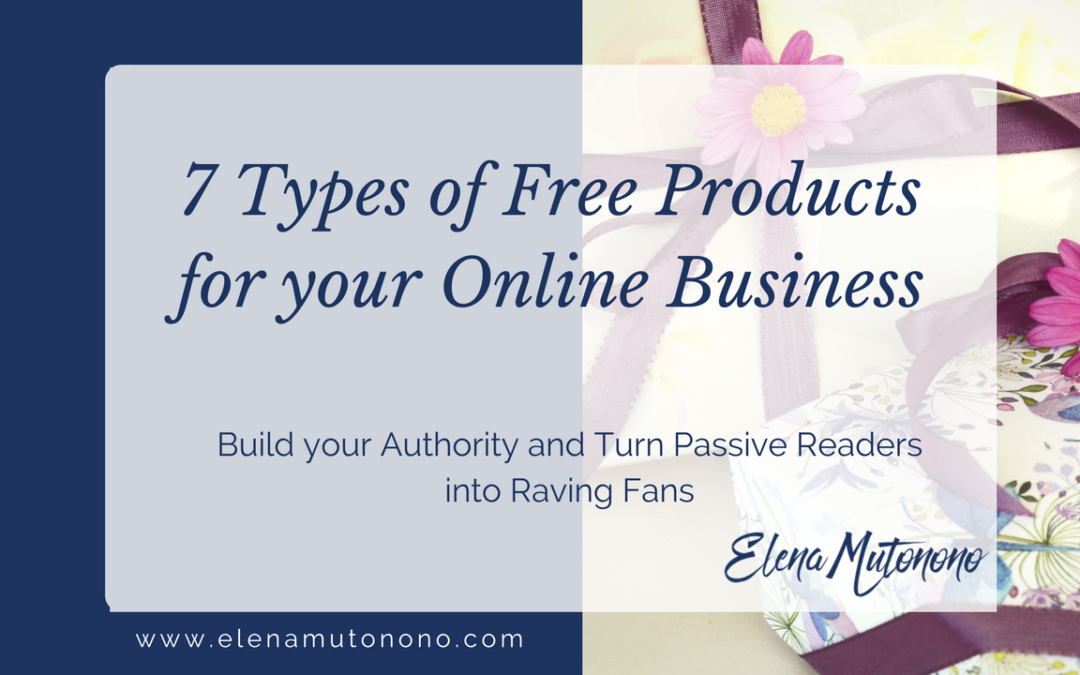
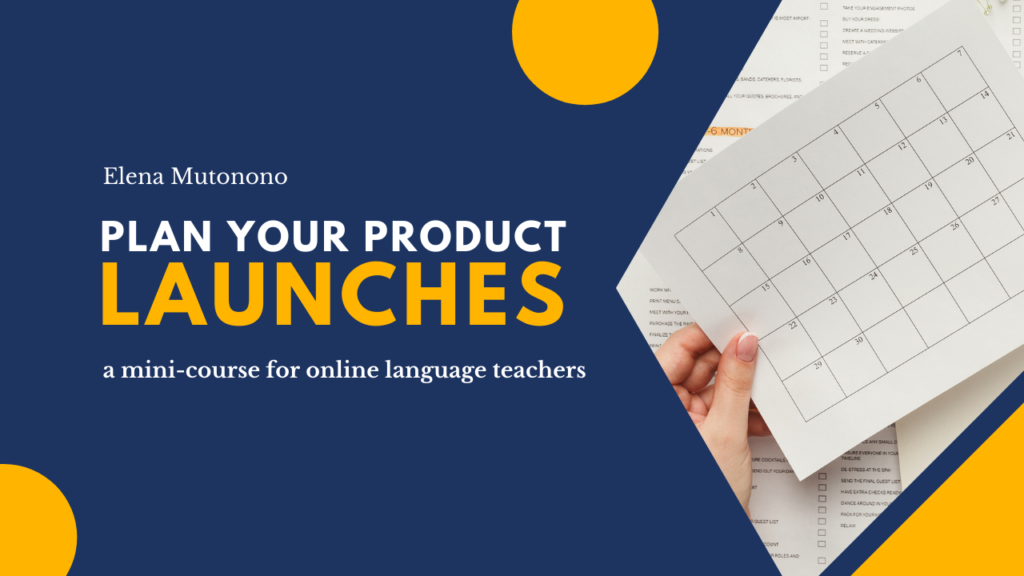
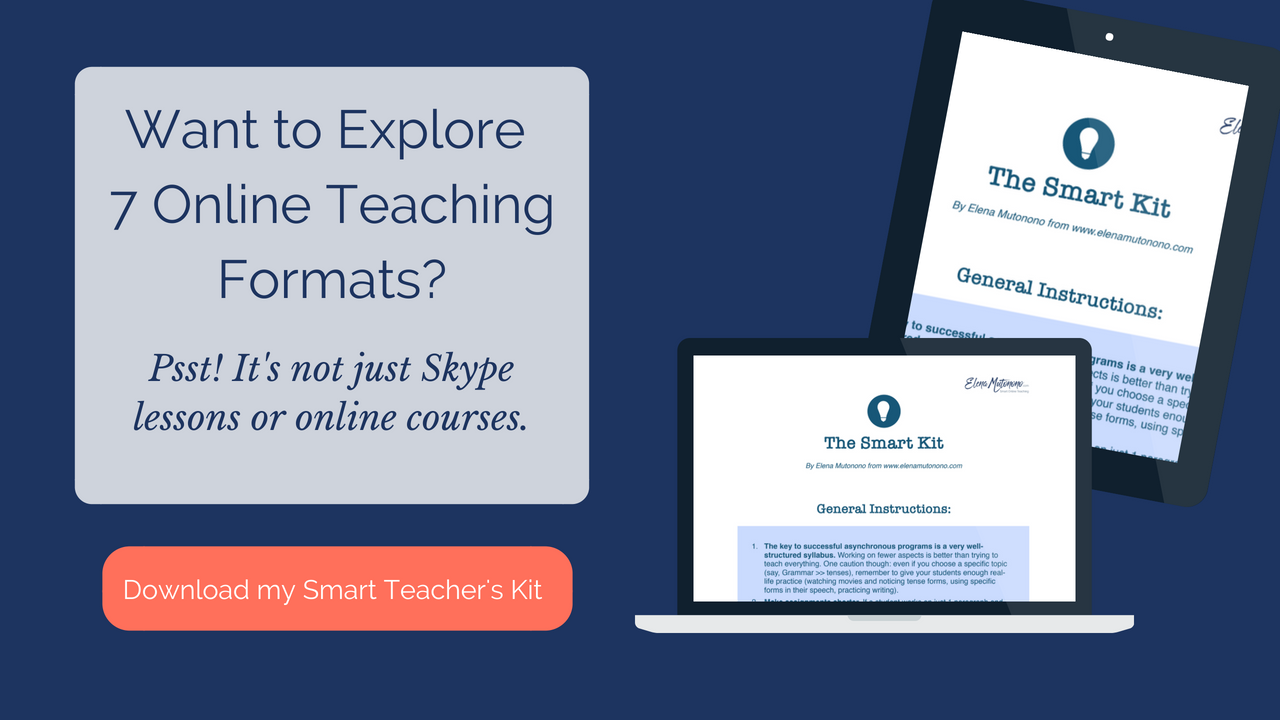
 Welcome to my nook where *Big Magic* happens. My name is Elena Mutonono, I help small business owners package their services as digital products and sell them online. I want you to work smarter, not harder. Increase your impact beyond your current face-to-face clients. Grow your business as you reach more people all over the world.
Welcome to my nook where *Big Magic* happens. My name is Elena Mutonono, I help small business owners package their services as digital products and sell them online. I want you to work smarter, not harder. Increase your impact beyond your current face-to-face clients. Grow your business as you reach more people all over the world.
